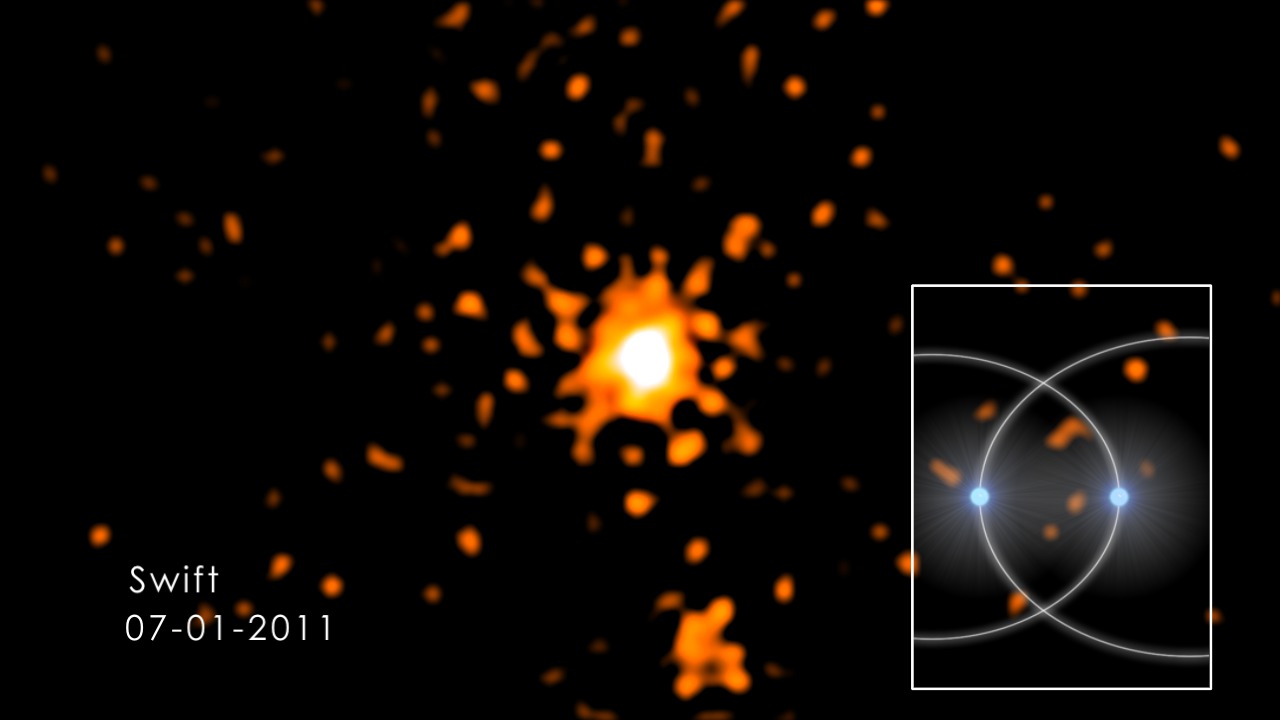Clashing Winds
A star cluster located about 4,700 light-years away in the constellation Cygnus holds some of the galaxy’s rarest suns. Of some 3,000 stars in the group, about 100 are classified as type O. These massive suns shine so hot and bright they drive their own surface gases outward at high speed in powerful outflows called stellar winds. Two of these stars circle each other tightly, forming the binary system known as Cygnus OB2 #9. Scientists long suspected that the winds from these stars collided, but never had direct evidence of this interaction. In June 2011, scientists made a breakthrough discovery. Using NASA’s Swift satellite and other space telescopes, they observed a sharp rise in X-rays coming from the system as the stars raced toward their closest approach. It turns out the X-ray increase was tied to their colliding winds, crashing together at speeds of millions of miles per hour. Watch the video to learn more.

Scientists observe colliding stellar winds from two colossal stars.
Learn more about Cygnus OB2 #9's stars, their orbits and the interaction of their stellar winds in this video.

This illustration shows the highly eccentric orbits of the two stars found in Cygnus OB2 #9.

Space telescopes monitored X-ray emissions (orange) from Cygnus OB2 #9 in the months leading up to the stars' closest approach.

As the stars grew closer, X-ray emissions increased.

Around closest approach, when the stars were separated by less than three times Earth's average distance from the sun, X-ray emissions peaked.
For More Information
See NASA.gov
Credits
Please give credit for this item to:
NASA's Goddard Space Flight Center
Cover image courtesy of NASA/C. Reed
X-ray images courtesy of NASA/GSFC/S. Immler
-
Animator
- Scott Wiessinger (USRA)
-
Video editor
- Scott Wiessinger (USRA)
-
Narrator
- Scott Wiessinger (USRA)
-
Producer
- Scott Wiessinger (USRA)
-
Scientist
- Stefan Immler (UMCP)
-
Writer
- Francis Reddy (Syneren Technologies)
Release date
This page was originally published on Thursday, November 6, 2014.
This page was last updated on Wednesday, May 3, 2023 at 1:50 PM EDT.
